The Romanian Deadlift (RDL) is a fundamental exercise that targets the posterior chain, emphasizing the hamstrings, glutes, and lower back.
When executed with proper form, the RDL enhances strength and contributes to improved flexibility and stability.
In this comprehensive guide, we will walk you through the key steps to perform the Romanian Deadlift effectively, ensuring maximum benefits while minimizing the risk of injury.
How to do a Romanian Deadlift
Step 1: Set Yourself Up
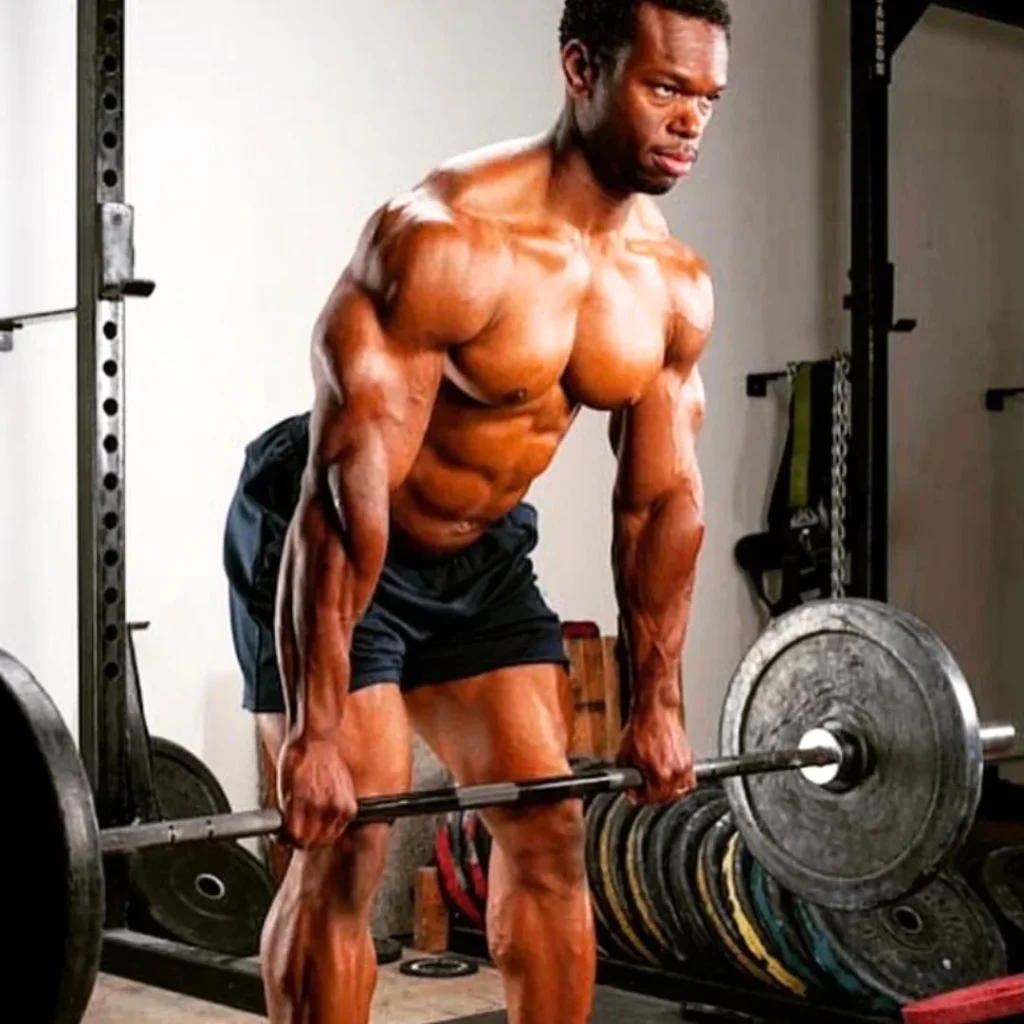
Begin by positioning the barbell loaded with the appropriate number of bumper plates directly in front of you on the floor.
There should be approximately an inch of space between your shins and the bar.
Adopt a stance with your feet underneath your hips and grip the bar slightly wider than shoulder width.
This grip provides stability and control throughout the movement.
Step 2: Engage Your Back and Deadlift

As you grip the bar, initiate the process by tightening your entire back. Although your upper back muscles don’t undergo a significant range of motion during the RDL, engaging them is crucial.
This engagement ensures a tight core and keeps the bar close to your body. Deadlift the bar smoothly, extending your hips and knees until you reach a standing position.
Maintain control throughout this phase to establish a solid foundation for the subsequent steps.
Step 3: Hinge at the Hips
With the barbell now standing, shift your focus to the hip hinge. Begin by shooting your hips backward as you lean forward, simultaneously keeping the bar close to your body.
Maintain a flat back throughout this movement, allowing your knees to unlock as your hips track backward slightly.
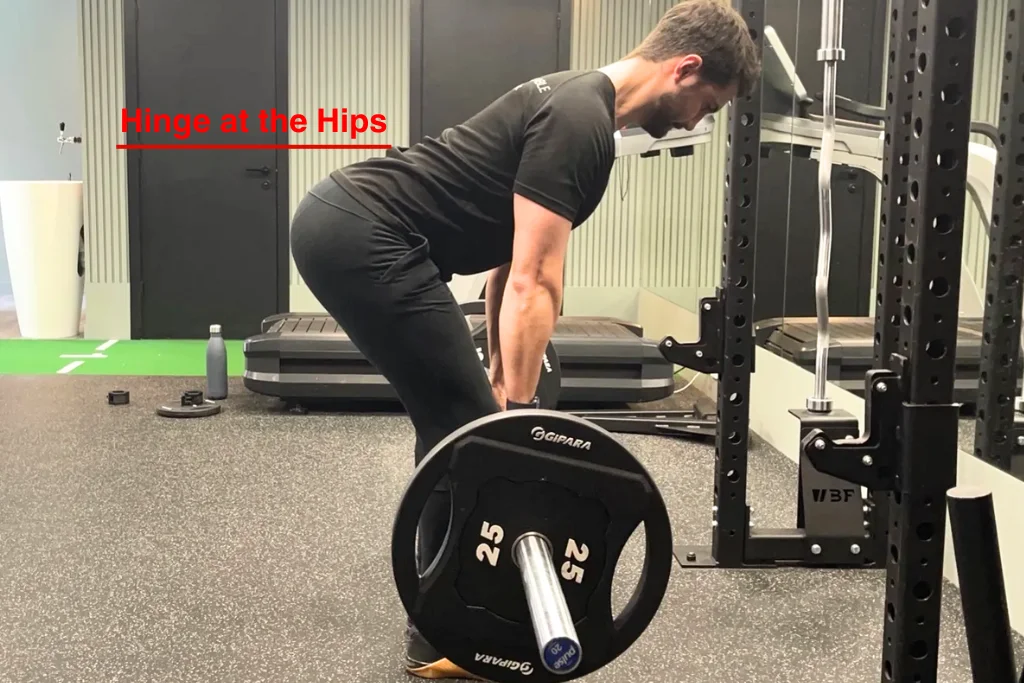
Keep your balance centered over the middle of your foot, continuing the hinge until you feel a strong stretch in your hamstrings.
This position emphasizes the eccentric phase of the Romanian Deadlift.
Step 4: Return to Upright Position
To complete the RDL, smoothly transition to the second half of the exercise. Dig your legs into the ground, pull your chest up, and squeeze your glutes.
This action brings your hips back toward the bar, allowing you to return to an upright position.
Ensure a controlled and deliberate movement, emphasizing the engagement of your hamstrings and glutes to avoid overreliance on your lower back.
By following these steps with precision and attention to form, you can master the Romanian Deadlift, unlocking its full potential for building strength and promoting overall lower body development.
Exploring Romanian Deadlift Variations for a Well-Rounded Workout

Diversifying your workout routine is an excellent way to stave off boredom and a key aspect of ensuring comprehensive muscle development.
While the traditional Romanian Deadlift (RDL) is a stalwart exercise for targeting the posterior chain, incorporating variations can add excitement and new challenges to your training regimen.
Here are a few notable RDL variations that can elevate your workout experience:
Hip-Banded Romanian Deadlift
The hip-banded variation provides a solution if you struggle with engaging your glutes during the RDL.
To execute this variation, attach two light-to-moderate resistance bands between the barbell and the pillars of a squat rack.
The resistance bands are a valuable tool to reinforce proper glute engagement and promote quality movement patterns.
Beyond its effectiveness, the hip-banded RDL also serves as an excellent teaching tool, aiding individuals in mastering the correct form.
Trap Bar Romanian Deadlift
Introducing the trap bar into your RDL routine offers a unique twist. Unlike the standard barbell, the trap bar allows for a more ergonomic grip option and aligns the load with your center of mass.
Using a pronated (palms down) grip with a standard barbell is the norm, but the trap bar’s design provides an alternative.
The shifted grip position alters the load distribution across your body, placing slightly more tension on your quads and core while reducing the load on your back.
This variation can be challenging and beneficial for those targeting different muscle groups.
Deficit Romanian Deadlift
The deficit Romanian Deadlift is an excellent choice for those seeking an increased range of motion at the hip joint and a heightened challenge.
This variation involves standing on an elevated surface like a riser or a few bumper plates. The added height amplifies the eccentric loading stress on the glutes and hamstrings, making the RDL even more effective.
This variation is a great way to intensify the workout and engage the muscles slightly differently, contributing to overall strength and flexibility gains.
Incorporating these Romanian Deadlift variations into your training routine keeps your workouts exciting and ensures a well-rounded approach to muscle development.
Experiment with these variations to discover which ones resonate best with your fitness goals and preferences, ultimately enhancing the effectiveness of your training sessions.
Benefits of the Romanian Deadlift
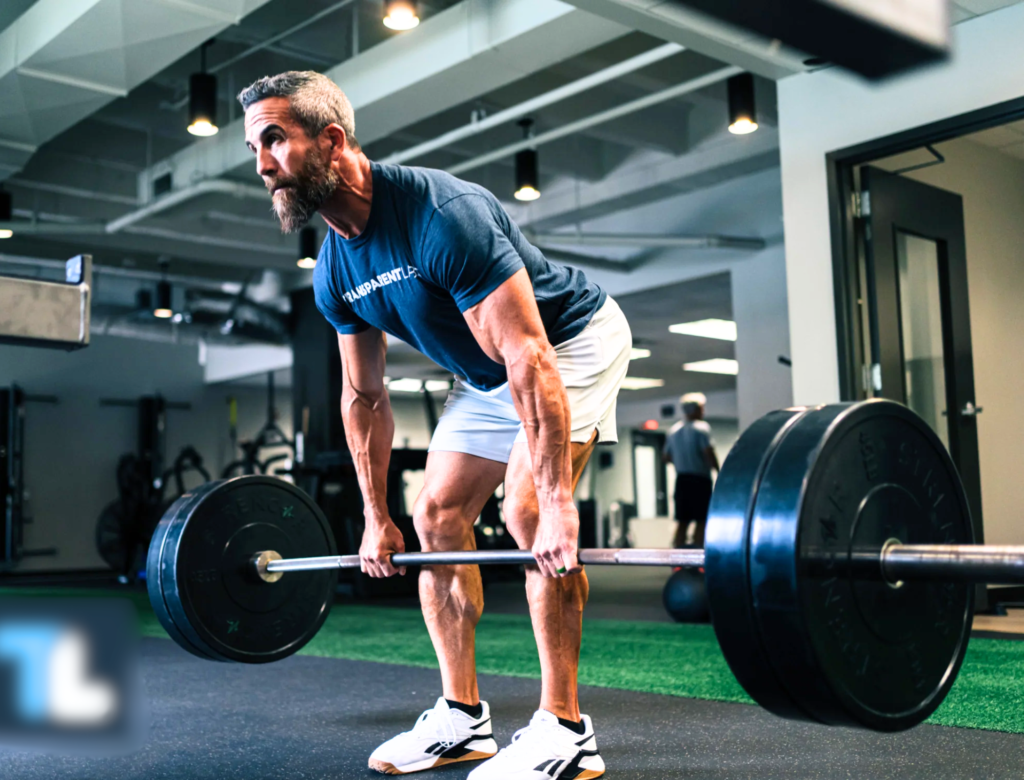
Whether striving for peak performance, sculpting a well-defined physique, or prioritizing overall health, the Romanian Deadlift (RDL) is a versatile and beneficial exercise offering a range of advantages.
Bigger Legs and Glutes
The primary focus of the RDL lies on the glutes and hamstrings, making it an effective tool for muscle hypertrophy. Mechanical tension, a key mechanism for muscle growth, is induced as these muscle fibers are stretched under the load of a barbell.
The controlled motion of the RDL, emphasizing the stretching of muscle fibers, provides an optimal environment for muscle development.
The consistent engagement of these muscle groups through RDL repetitions can contribute to substantial growth in both your legs and glutes.
A Stronger Lower Body
Strength is a multifaceted outcome influenced by muscular hypertrophy, neuromuscular adaptation, and skill acquisition. Regular exposure to RDL, regardless of the weight used, enhances your proficiency and strength.
Incorporating RDL into your training regimen fosters muscular development, refines neuromuscular pathways, and refines the skills associated with this compound movement.
The result is a stronger lower body, promoting overall functional fitness.
Injury Prevention
A robust set of hamstrings developed through the RDL can contribute to a more favorable hamstring-to-quadricep (H: Q) ratio.
This balance is instrumental in lowering the risk of hamstring injuries and minimizing strain on knee ligaments. Maintaining a healthy H: Q ratio is crucial for injury prevention in sports and daily activities.
Incorporating RDL into your routine fortifies your lower body, reducing the likelihood of injuries and supporting longevity in physical activities.
Increased Flexibility
The RDL isn’t just about strength it also plays a significant role in enhancing muscular flexibility.
The eccentric phase of the exercise, where the hamstrings lengthen while absorbing the load, is particularly beneficial for flexibility.
With each loaded stretch during the RDL, the flexibility of your hamstrings gradually increases over time.
This dual benefit of strength and flexibility makes the RDL a valuable addition to any comprehensive resistance training program.
Incorporating the Romanian Deadlift into your fitness routine offers many benefits, from muscular development and strength gains to injury prevention and increased flexibility.
As you embark on your fitness journey, consider the RDL a powerful tool to elevate your lower body strength, promote overall health, and unlock your physique’s full potential.
Navigating the Pitfalls: Common Romanian Deadlift Mistakes
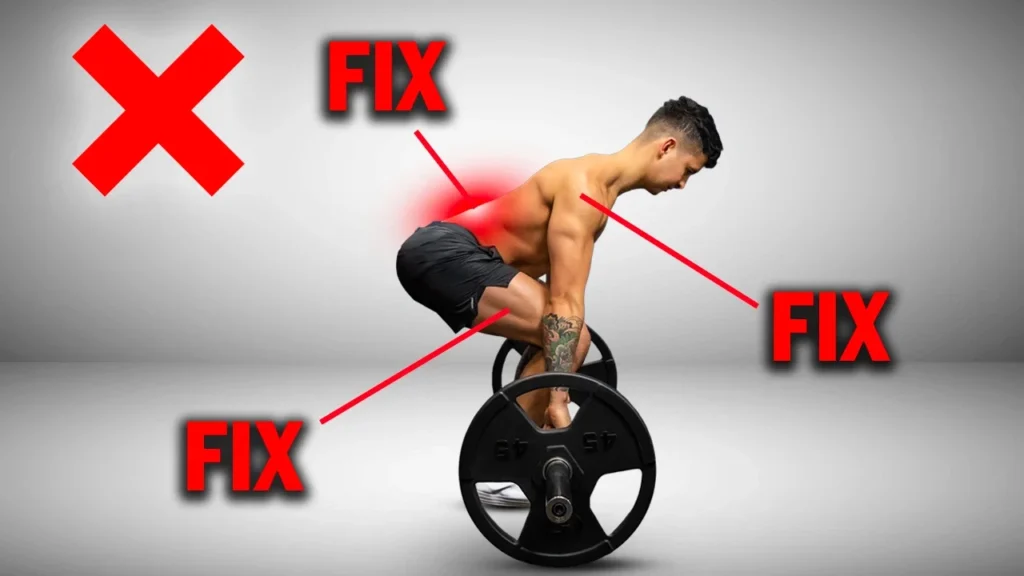
Executing the Romanian Deadlift (RDL) demands precision to maximize its benefits and minimize the risk of injury.
While not every repetition may mirror textbook form, maintaining structural integrity is crucial. Here are some common mistakes to be wary of during the RDL:
Not Keeping The Bar Close
Imagine picking up a laundry basket with a significant gap between you and the basket. The concept holds for the RDL.
Allowing the bar to drift away from your body can increase perceived weight, compromise balance, and hamper muscular activation. The key is to keep the bar as close to your body as possible.
This proximity enhances leverage during the lift, optimizing your ability to execute the movement effectively.
Excessive Back Rounding
Excessive back rounding during the RDL is a critical mistake that can stem from various factors.
Incorrect barbell positioning or poor technique can contribute to unnecessary tension on the lower back, raising the risk of injury.
To mitigate this risk, focus on maintaining a flat back throughout the movement, lifting primarily with your legs.
If you observe excessive back rounding, it may indicate that the weight is too heavy. Prioritize from overweight to ensure a safe and effective RDL.
Too Much Knee Bend
One of the distinctive features of the RDL is the emphasis on the posterior chain, particularly the hamstrings and glutes.
Excessive knee bending can alter the exercise, turning it into a more conventional deadlift and shifting the emphasis to different muscle groups.
While maintaining a slight bend in the knees throughout the movement is essential, lifting with the quads should be avoided.
Keep a vigilant eye on your knee position, ensuring they remain slightly bent to preserve the targeted benefits of the RDL without compromising its integrity.
Maintaining awareness and addressing these common mistakes will enhance the effectiveness of your Romanian Deadlift, promoting a safer and more rewarding experience.
Regular self-assessment and a commitment to proper form are essential for reaping the full benefits of this powerful lower-body exercise.
Optimizing Your Romanian Deadlift Sets and Reps for Your Fitness Goals
Tailoring your Romanian Deadlift (RDL) sets and reps to align with your specific fitness objectives is key to achieving optimal results.
Whether you’re focusing on inducing muscular hypertrophy, enhancing muscular strength, or building muscular endurance, here are programming guidelines to help you get the most out of your RDL for your desired goal:
Romanian Deadlift For Muscle Mass:
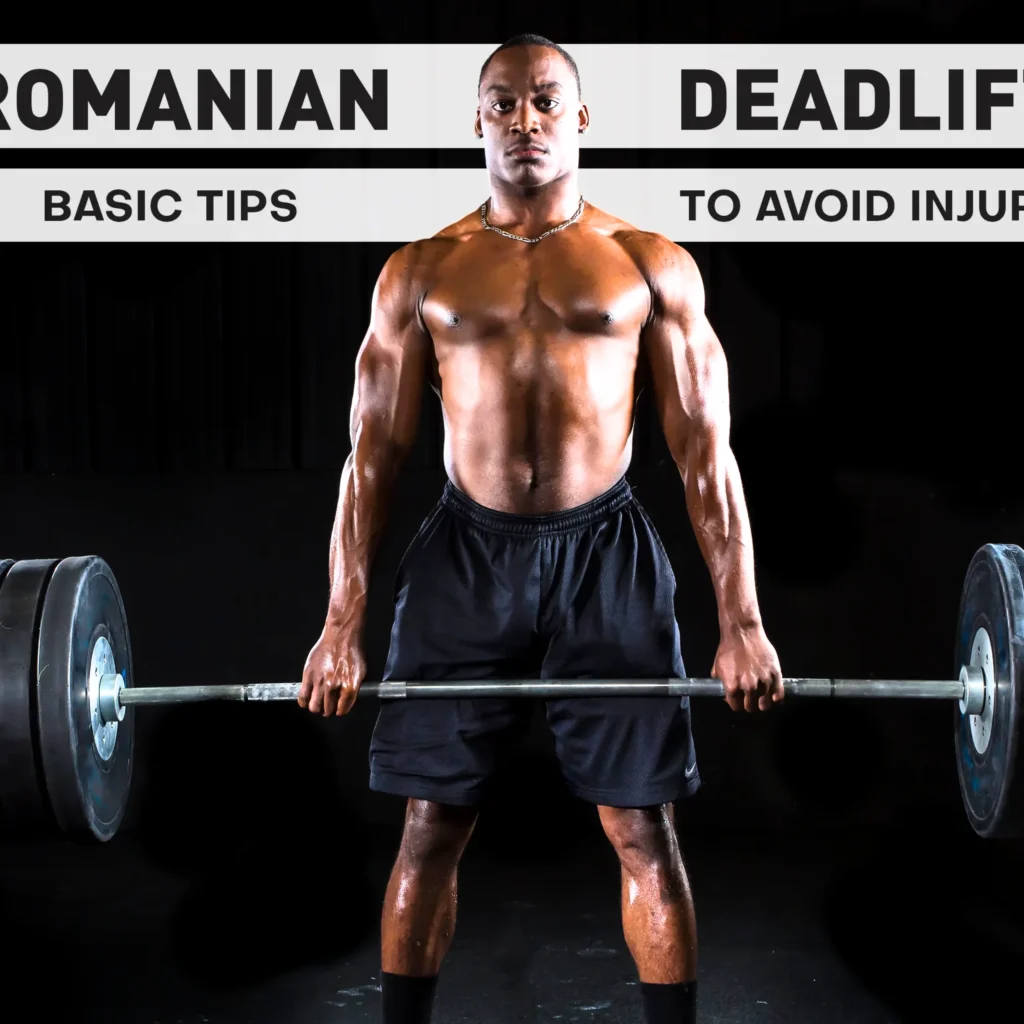
- Sets and Reps: Perform 3-4 working sets of 8-12 reps. Aim to leave 2-3 reps in the tank for each set.
- Load: Utilize a moderate to heavy load that challenges your muscles without sacrificing form.
- Rest Period: Allow 1-2 minutes of rest between sets. This duration promotes sufficient recovery for the next set while maintaining intensity.
- The focus is on creating metabolic stress and inducing muscular hypertrophy by targeting a moderate rep range with an adequately challenging weight.
Romanian Deadlift For Strength:
- Sets and Reps: Aim for 3-5 working sets of 1-5 reps. Keep 0-2 reps in the tank for each set.
- Load: Use a heavy load to perform the desired number of reps with proper form.
- Rest Period: Provide a longer rest period of 3-5 minutes between sets.
- This extended rest allows for maximal recovery, which is crucial for strength development.
- This approach emphasizes neuromuscular adaptation and maximal force production, focusing on lower rep ranges with heavier weights.
Romanian Deadlift For Endurance:
- Sets and Reps: Perform 2-3 working sets of 12 or more reps.
- Load: Choose a lighter load on the bar, emphasizing higher repetitions to target muscular endurance.
- Rest Period: Keep rest intervals short, ranging from 20-40 seconds between sets.
- This more straightforward rest promotes muscular endurance by sustaining a higher level of fatigue.
- This strategy promotes endurance through lighter weights and higher rep ranges, with minimal rest between sets.
By tailoring your RDL sets and reps according to these guidelines, you can optimize the exercise for your specific fitness goals, ensuring a well-rounded and effective training program.
Mastering the Romanian Deadlift for Comprehensive Fitness Gains
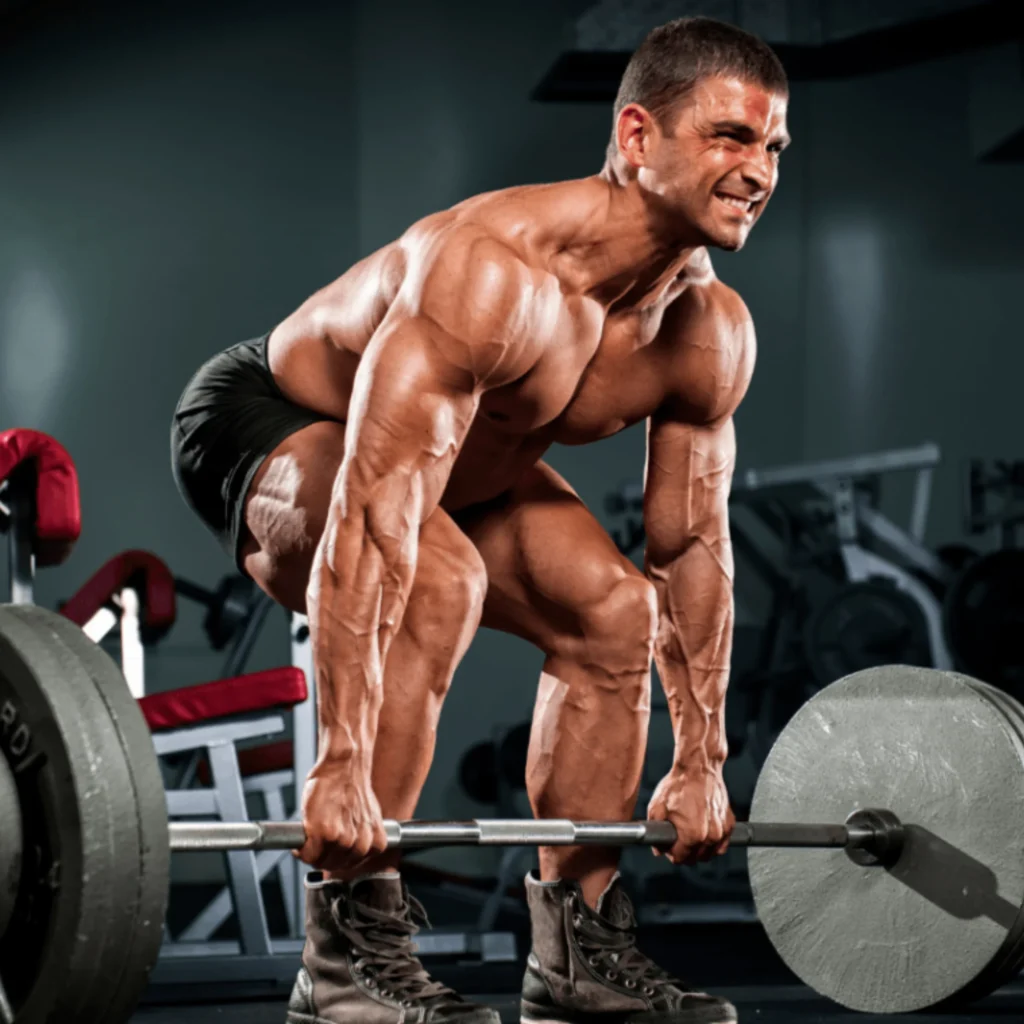
Incorporating the Romanian Deadlift (RDL) into your fitness routine is a strategic choice that promises many benefits, provided it is executed with precision and mindful programming.
From sculpting bigger legs and glutes to fostering a stronger lower body, the RDL has earned its place as a versatile compound movement with the potential to elevate your overall fitness.
As you embark on your journey to master the Romanian Deadlift, you must be aware of its merits and potential pitfalls.
The variations explored, from hip-banded RDLs to trap bar variations and deficit RDLs, offer an opportunity to keep your workouts engaging while targeting different aspects of muscle engagement and movement patterns.
Understanding the intricacies of the RDL is not only about the exercises themselves but also about recognizing common mistakes.
By avoiding errors such as letting the bar drift away, excessive back rounding, or too much knee bend, you ensure that every repetition contributes to your progress and reduces the risk of injury.
Programming your RDL sets and reps in alignment with your specific fitness goals further enhances its effectiveness.
Whether you aim to build muscle mass, enhance strength, or improve endurance, the tailored guidelines empower you to customize your training regimen for optimal results.
In conclusion, the Romanian Deadlift is a powerhouse exercise that can unlock myriad fitness gains when executed with proper form, awareness, and strategic programming.
From aesthetic improvements to functional strength and injury prevention, the RDL proves its versatility in resistance training.
As you integrate this dynamic movement into your routine, remember that mastery comes with consistency, attention to detail, and a commitment to form and progression.
Embrace the Romanian Deadlift as a cornerstone in your fitness journey, and watch as it propels you towards your desired health and wellness goals.